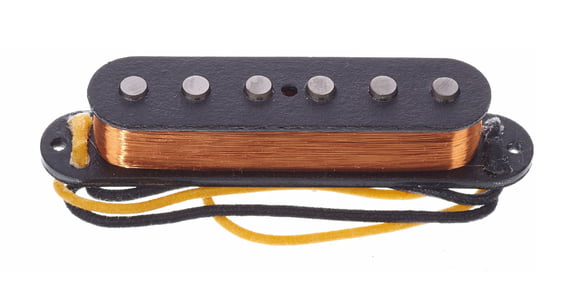2. Function
How does an electric guitar pickup work?
There is nothing mysterious about the basic principles of electric guitar pickups. In fact the phenomenon at work here also makes many other devices possible, from the bicycle dynamo to the microphone. The principle responsible is known as induction.
And that term almost immediately brings two other buzz words from applied physics to mind: magnetism and coils - and these are, as you may suspect, the basic components of every magnetic guitar pickup!
A pickup consists of a copper wire coil enclosing one or more magnets. In many models pole screws made of iron are used which connect with a magnet under the pickups to achieve magnetization. But more on that later. The poles have the task of picking up vibrations from each guitar string with pinpoint accuracy. But how do they do this?
This is where induction comes into play...
The movement of the (metal) strings over the magnet/pole pieces disrupts the magnetic field present there, this in turn causes the copper wire to produce a voltage. This is known in physics as induction. Since the strength of the flowing current is directly dependent on the intensity and frequency at which the played string oscillates within the magnetic field, it is possible to convert this disruption, one to one, into an electrical signal. This signal carries all the information needed to be converted into an audible signal by an amplifier.



